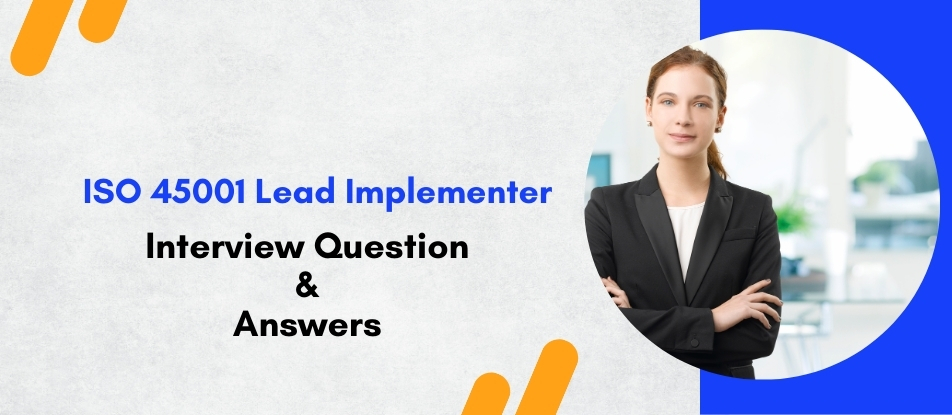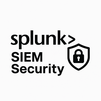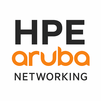
The ISO 45001 Lead Implementer Course is designed for professionals seeking in-depth expertise in managing workplace health and safety. This training covers essential principles of ISO 45001, including hazard identification, risk management, compliance, leadership roles, and worker engagement. Learners acquire practical skills to plan, implement, audit, and improve an OH&S Management System effectively. With real-world case studies and expert guidance, participants are prepared to lead organizations toward enhanced safety performance, regulatory compliance, and successful ISO 45001 certification.
ISO 45001 Lead Implementer Training Interview Questions Answers - For Intermediate
1. What is the purpose of an Occupational Health and Safety Management System (OHSMS)?
The primary purpose of an OHSMS is to provide a structured framework for organizations to manage risks and opportunities related to workplace safety. It ensures proactive hazard identification, compliance with legal requirements, and implementation of measures that protect workers from accidents, injuries, and illnesses.
2. How does ISO 45001 emphasize risk-based thinking?
ISO 45001 applies risk-based thinking by requiring organizations to identify potential risks and opportunities before they result in incidents. This approach goes beyond compliance and encourages proactive strategies, enabling organizations to anticipate hazards, assess their impact, and implement preventive measures for continual safety improvement.
3. What is the role of the Occupational Health and Safety policy in ISO 45001?
The OH&S policy sets the organization’s direction regarding safety commitments. It establishes a foundation for objectives, communicates intentions to stakeholders, and reinforces leadership responsibility. The policy must be documented, maintained, and effectively communicated to employees to ensure alignment and understanding at all levels.
4. How does ISO 45001 approach contractor and supplier management?
The standard requires organizations to ensure contractors and suppliers adhere to health and safety requirements. This involves evaluating their practices, monitoring compliance, and integrating them into the OHSMS. Proper contractor management reduces external risks and ensures consistent safety standards across the supply chain.
5. Why is consultation and participation of workers crucial in ISO 45001?
Consultation ensures workers’ knowledge and experiences contribute to safety decision-making, while participation empowers them to identify risks and propose improvements. Involving employees strengthens commitment, builds trust, and enhances system effectiveness by leveraging firsthand insights into workplace hazards and operational challenges.
6. How does ISO 45001 define opportunities in the context of OH&S?
Opportunities in OH&S refer to initiatives that enhance worker safety and well-being beyond just risk prevention. Examples include introducing ergonomic solutions, adopting new safety technologies, or implementing wellness programs. Seizing these opportunities can improve morale, productivity, and organizational reputation.
7. What is the role of operational controls in ISO 45001?
Operational controls are preventive measures designed to manage identified risks. These include procedures, training, equipment safeguards, and administrative policies. By establishing strong operational controls, organizations minimize exposure to hazards and ensure consistent adherence to safe practices across operations.
8. How does ISO 45001 address competence and training?
The standard requires organizations to determine competency needs for roles affecting OH&S performance. Employees must be trained, evaluated, and provided with ongoing development opportunities. Competence is verified through performance monitoring, and training records are maintained as evidence of compliance.
9. What is the role of performance evaluation in ISO 45001?
Performance evaluation measures the effectiveness of the OHSMS. It involves monitoring objectives, reviewing compliance, and conducting internal audits. Performance data provides insights into whether controls are effective and highlights areas where corrective or preventive actions are required.
10. How does ISO 45001 handle incident investigation?
The standard requires a structured approach to incident investigation. Organizations must identify root causes, document findings, and implement corrective actions to prevent recurrence. Learning from incidents, including near-misses, is critical for strengthening the safety culture and achieving continual improvement.
11. How is communication managed under ISO 45001?
Effective communication ensures that safety policies, procedures, and updates are shared clearly with employees, contractors, and stakeholders. Communication must be both internal and external, tailored to audience needs, and supported by appropriate documentation. It ensures awareness and alignment across the organization.
12. What is the importance of documented information in ISO 45001?
Documented information serves as evidence of conformity, accountability, and effectiveness. It includes policies, procedures, training records, and monitoring data. While ISO 45001 allows flexibility, documentation must be sufficient to demonstrate that processes are effectively planned, implemented, and continually improved.
13. How does ISO 45001 deal with continual workforce health improvement?
Beyond preventing injuries, ISO 45001 encourages initiatives that enhance overall worker health. This may include stress management programs, mental health awareness, ergonomic assessments, and promoting work-life balance. These measures strengthen workforce resilience and contribute to long-term safety culture.
14. How does ISO 45001 approach outsourcing and external processes?
The standard requires organizations to ensure outsourced processes align with OHSMS requirements. Control measures, monitoring, and contractual obligations must be applied to outsourced activities. This ensures that safety risks are managed consistently, regardless of whether tasks are performed internally or externally.
15. How is top management accountability demonstrated in ISO 45001?
Top management is accountable for ensuring OHSMS integration into organizational processes. Accountability is demonstrated by defining roles, allocating resources, setting measurable objectives, and actively reviewing system performance. Their involvement signals commitment, driving employee confidence and system effectiveness.
ISO 45001 Lead Implementer Training Interview Questions Answers - For Advanced
1. How does ISO 45001 influence organizational culture change?
ISO 45001 encourages organizations to shift from reactive compliance-based safety management to proactive, risk-based thinking. By embedding health and safety considerations into strategic planning, daily operations, and leadership accountability, it drives cultural transformation where safety becomes a shared value rather than an imposed obligation. Cultural change is further reinforced through continuous communication, worker participation, and visible leadership commitment, ensuring employees internalize safety as an integral aspect of organizational behavior.
2. How does ISO 45001 link with sustainability and corporate social responsibility (CSR)?
ISO 45001 supports sustainability initiatives by focusing on worker well-being, reducing accidents, and fostering safer workplaces, which aligns with social sustainability goals. It enhances CSR by demonstrating an organization’s accountability toward employee welfare and community impact. Safe operations reduce environmental risks and reputational damage, thereby strengthening stakeholder trust. Many companies integrate ISO 45001 into sustainability reporting, reinforcing their commitment to ethical and responsible business practices.
3. What is the significance of integrating ISO 45001 with enterprise risk management (ERM)?
Integration with ERM ensures occupational health and safety risks are considered alongside financial, operational, and reputational risks. This creates a holistic risk profile for decision-making. By adopting this approach, organizations can align safety initiatives with overall resilience strategies, allocate resources more effectively, and prioritize actions that safeguard both employees and business continuity. This alignment also ensures that OH&S metrics are reported at board level, reflecting their importance in corporate governance.
4. How does ISO 45001 address change management within organizations?
ISO 45001 explicitly requires organizations to evaluate the OH&S implications of planned changes, including new technologies, processes, or organizational structures. Change management under this standard is proactive, involving risk assessments, training, and consultation with affected workers. By embedding OH&S into change management frameworks, organizations prevent unintended risks during transitions and ensure changes contribute positively to overall safety performance.
5. How are key performance indicators (KPIs) used within ISO 45001?
KPIs under ISO 45001 go beyond traditional incident rates to include proactive and predictive measures. Examples include near-miss reporting frequency, completion rates of safety training, and employee engagement in safety initiatives. Advanced organizations also use KPIs tied to leadership accountability, contractor performance, and health outcomes. This comprehensive measurement system ensures balanced monitoring, allowing both lagging and leading indicators to shape informed decision-making and continuous improvement.
6. What role do external stakeholders play in ISO 45001 implementation?
External stakeholders such as regulators, clients, insurers, and communities influence the design and performance of the OHSMS. ISO 45001 requires organizations to consider their expectations when determining compliance obligations and operational controls. Engaging stakeholders builds transparency and credibility while ensuring that the organization remains aligned with external requirements and industry best practices. This engagement also helps mitigate reputational risks and enhances customer confidence in the organization’s commitment to safety.
7. How does ISO 45001 contribute to operational resilience?
By embedding risk-based thinking and proactive hazard control, ISO 45001 strengthens organizational resilience against disruptions. Resilient systems are built through effective emergency preparedness, continual training, and robust communication mechanisms. In practice, this means organizations can recover faster from accidents, minimize downtime, and protect supply chains. Resilience is enhanced by the ability to anticipate risks, adapt to new challenges, and maintain continuity of safe operations under changing conditions.
8. What advanced audit techniques are relevant for ISO 45001 Lead Implementers?
Beyond compliance checks, advanced audits use risk-based approaches, behavioral safety observations, and data-driven analytics. Lead Implementers may adopt vertical audits (tracing one activity across processes), horizontal audits (reviewing how multiple processes align to requirements), or integrated audits (covering ISO 45001 alongside ISO 9001 and ISO 14001). Digital audit tools such as dashboards and automated workflows enhance transparency and efficiency. These advanced techniques provide deeper insights into system effectiveness and improvement opportunities.
9. How does ISO 45001 approach continual worker competency development?
The standard requires competency not just at initial training but as an ongoing process. Advanced organizations develop tailored training plans, mentoring programs, and simulation-based exercises. Competency is measured through performance evaluations, incident analyses, and regular refresher programs. This continuous development ensures workers remain equipped to handle evolving risks, adapt to new technologies, and contribute actively to organizational safety objectives.
10. How does ISO 45001 handle multi-site or multinational implementation challenges?
For multi-site or multinational organizations, ISO 45001 provides a unified framework but allows flexibility for local adaptation. Challenges arise due to varying legal requirements, cultural attitudes toward safety, and resource disparities. Effective implementation requires centralized governance for consistency, supported by localized systems to address site-specific risks. Lead Implementers often develop global policies with regional customization, supported by audits, training, and cross-site knowledge sharing.
11. How are corrective and preventive actions (CAPA) structured in ISO 45001?
Corrective and preventive actions are structured through root cause analysis, documentation of nonconformities, and systematic resolution. Organizations are expected to go beyond surface-level fixes by addressing underlying issues such as inadequate training or poor system design. CAPA processes also emphasize preventive action by using incident data and near-miss analysis to predict and mitigate future risks. This structured approach ensures the OHSMS evolves based on lessons learned.
12. How does ISO 45001 contribute to reducing indirect costs of workplace incidents?
Workplace incidents result in indirect costs such as lost productivity, reputational damage, higher insurance premiums, and employee turnover. ISO 45001 reduces these costs by preventing incidents through structured risk assessments, proactive monitoring, and continual improvement measures. Beyond compliance, organizations gain financial benefits from higher employee morale, reduced downtime, and better stakeholder relationships, making OH&S a driver of long-term cost efficiency.
13. What advanced tools support ISO 45001 performance monitoring?
Advanced organizations use digital dashboards, IoT-enabled monitoring systems, and predictive analytics to track OH&S performance. Tools like automated incident reporting platforms, mobile safety apps, and AI-driven risk models enhance accuracy and responsiveness. Data visualization allows management to identify patterns, prioritize risks, and allocate resources effectively. These advanced tools transform monitoring from reactive reporting into strategic, predictive decision-making.
14. How does ISO 45001 integrate with ESG (Environmental, Social, and Governance) frameworks?
ISO 45001 supports the “Social” pillar of ESG by demonstrating a structured approach to workforce safety and well-being. Integration ensures organizations can report measurable safety outcomes within ESG disclosures, strengthening investor confidence. By linking safety with environmental and governance practices, ISO 45001 creates a comprehensive risk management framework that aligns with sustainability objectives. This integration positions organizations as responsible and ethical market leaders.
15. What strategic benefits can ISO 45001 certification deliver to an organization?
ISO 45001 certification goes beyond compliance by providing competitive advantages. It demonstrates commitment to global safety standards, which can enhance credibility during client negotiations and bidding processes. Certification also improves employee retention by showcasing care for workforce welfare. Strategically, it reduces risks that could impact continuity, strengthens stakeholder trust, and enhances the organization’s brand reputation. In highly regulated industries, certification is often a differentiator that enables market access and growth opportunities.
Course Schedule
| Nov, 2025 | Weekdays | Mon-Fri | Enquire Now |
| Weekend | Sat-Sun | Enquire Now | |
| Dec, 2025 | Weekdays | Mon-Fri | Enquire Now |
| Weekend | Sat-Sun | Enquire Now |
Related Courses
Related Articles
- 8051 Microcontroller Programming Training Makes Learning Embedded Systems Easier
- Microsoft Azure Tutorial & its hidden benefits
- Decoding the roles and responsibilities of a ServiceNow Administrator Training
- CyberArk & its Components
- How Salesforce Financial Services Cloud is Redefining Wealth Management?
Related Interview
Related FAQ's
- Instructor-led Live Online Interactive Training
- Project Based Customized Learning
- Fast Track Training Program
- Self-paced learning
- In one-on-one training, you have the flexibility to choose the days, timings, and duration according to your preferences.
- We create a personalized training calendar based on your chosen schedule.
- Complete Live Online Interactive Training of the Course
- After Training Recorded Videos
- Session-wise Learning Material and notes for lifetime
- Practical & Assignments exercises
- Global Course Completion Certificate
- 24x7 after Training Support














 Join our Live Instructor-Led online classes delivered by industry experts
Join our Live Instructor-Led online classes delivered by industry experts